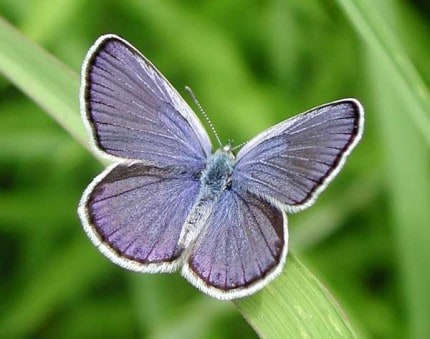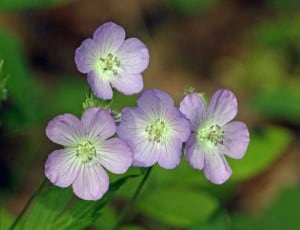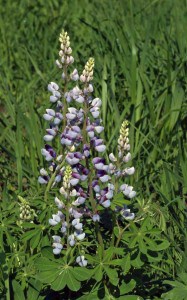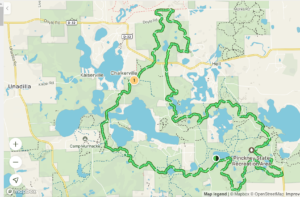
(Chelsea Update would like to thank Tom Hodgson and the Waterloo Natural History Association for the photos and the information in this column. Thank you also to the Michigan Nature Association for the photo of the Karner Blue Butterfly photo.)

There are two blue flowers now in blossom that mark the transition between two wildflower seasons.
Wild geranium marks the end of the woodland wildflower season. It’s blooming coincides with the rapidly expanding leaves of the forest canopy that effectively shut off the life-giving sun from those wildflowers blooming on the ground below.
Fortunately, the spring woodland wildflowers adapted to this phenomenon long ago. Most bloom, produce seeds and store energy for the coming year in that short period between snow melt and the leafing out of the trees.

While wild geranium is closing out the spring blooming season, wild blue lupine is ushering in the summer wildflower season in area prairie sites. Its blossoms vary from deep purple to pink, but are most often blue. Lupine is a flower of the native prairies whose population has declined by 90 percent due to habitat loss. It is the only host for the caterpillar of the Karner blue butterfly, which has experienced a similar decline and is now considered a threatened species.
Fortunately for those who love this blue flower, there are at least two sites in our area where it can still be found. One is in the restored prairie at the Discovery Center and the other is in another restored prairie at the Haehnle Audubon Sanctuary. The Discovery Center is located on Bush Road just west of Chelsea. Park in the lower parking lot and walk the black-top trail toward the Discovery Center. You will find the lupine in bloom in the first 100 yards.
The best way to reach the Haehnle Sanctuary is to take I-94 west to exit 147 (Race Road), go north to Seymour Road. Turn left on Seymour and travel about 1.5 miles. The entrance to the Sanctuary is on the right. Walk to the observation hill and then take the trails through the nearby prairie site.
Lupine should be in bloom for the next couple of weeks. Many return visits are recommended to these sites over the course of the summer, as they will host a veritable parade of prairie wildflowers from now until the end of the growing season in October. The trails on both of these prairie sites are well maintained and make for easy walking.
















